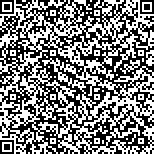下载中心
优秀审稿专家
优秀论文
相关链接
摘要

机载激光测距数据是机载激光扫描测距系统获取的三维地面信息,它由离散、不规则的点云构成,这些点云构成了测区的数字表面模型(DSM).准确地将点云中的地面点和非地面点分离,即从DSM中提取数字地面模型(DTM),目前仍是一项挑战性的工作.数学形态学以集合论为基础,适合信号形态分析和描述.应用形态学灰值开运算可以移除点云中的非地面点,但是逐渐增大的结构元素会导致提取的DTM过于平坦.针对过度过滤导致地形细节丢失问题,提出了一种带有约束条件的过滤方法,该方法根据地形起伏程度设定阈值,通过阈值控制运算结果,并以中国自主研制的机载激光扫描测距系统所产生的数据为例,证明该方法的可行性及有效性.
Recentprogresses in airborne light detection and ranging (LIDAR) technology allow rapid and inexpensive measurementsoftopography over large areas. This technologybecomes a prmi arymethod forgeneratinghigh-resolution dig-ital terrainmodel (DTM) that is essential to numerous applications. LIDAR techniques represent a new and fruitful ap-proach in the determination of digital surface mode.l LIDAR systems usually return a three-dmi ensional cloud of point measurements from reflective objects scanned by the laserbeneath the flightpath.One of the goals in processingLiDAR point cloud is to setup filteringmethods in order to extract the digital terrain model automatically. There are a lot ofmethods of extracting DTM from LiDAR point cloud, but removing nonground points is stilla challenging task. Inorder to generate a DTM, measurements from nonground features (buildings, vehicles and vegetation etc.) have to be removed.Mathematicalmorphology is based on set theory to extract features from an miage and fits for signal analysis. Ithas been demonstrated thatoperation opening can remove objects on ground (vegetations, buildings, etc.)from LiDAR point cloud and reserve objects larger than structuring element. To find out a proper structuring element is very difficult. The largerwindow size of structuring elementwould over filter DTM and the smallerwindow would not filter all nonground objects. Allnonground objects could be removed by one tmie opening operation theoretically if the structuring element is appropriate. Unfortunately there isno such structuring element in realitybecause of the complexity of terrain surface. This can be resolved by gradually increasing structuring element,which can filterobjects on ground, butsome terrainmeasure-ments also have been filtered at the same tmi e. This results in too flaton terrain surface and the extracted DTM is lower than the rea.l In thispaper, a restricted filtermethod isdeveloped to solve the terrain details loss caused by over filtered. The over-all process starts from an initial setofpoints, then gradually increases the structuring elementwhich is restrictedwith ele-vation difference thresholds atthe same tmie. Elevation difference threshold is setbyundulation ofterrain, and itcan con-trol result.The ratio of elevation difference of before and after opening to structuring elementwindow size is k,which represents undulating grade. The larger the value ofk is, the steeper the area is, and vice versa in order to reserve the terrain details,the threshold ofk is setk0. Resultvalue of filtered remains invariablewhenk

